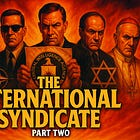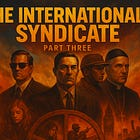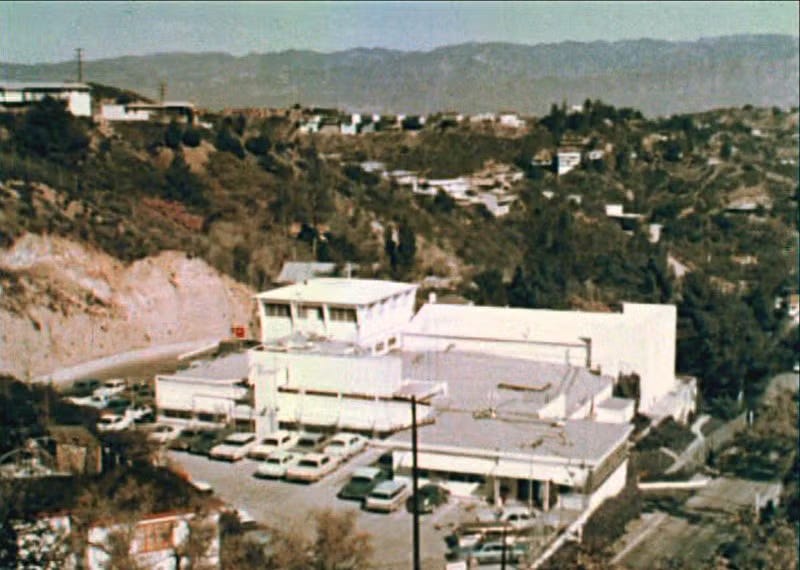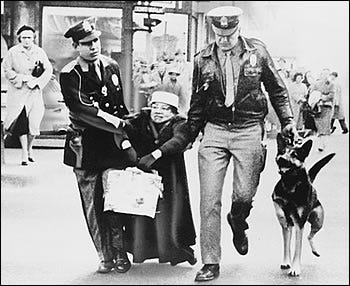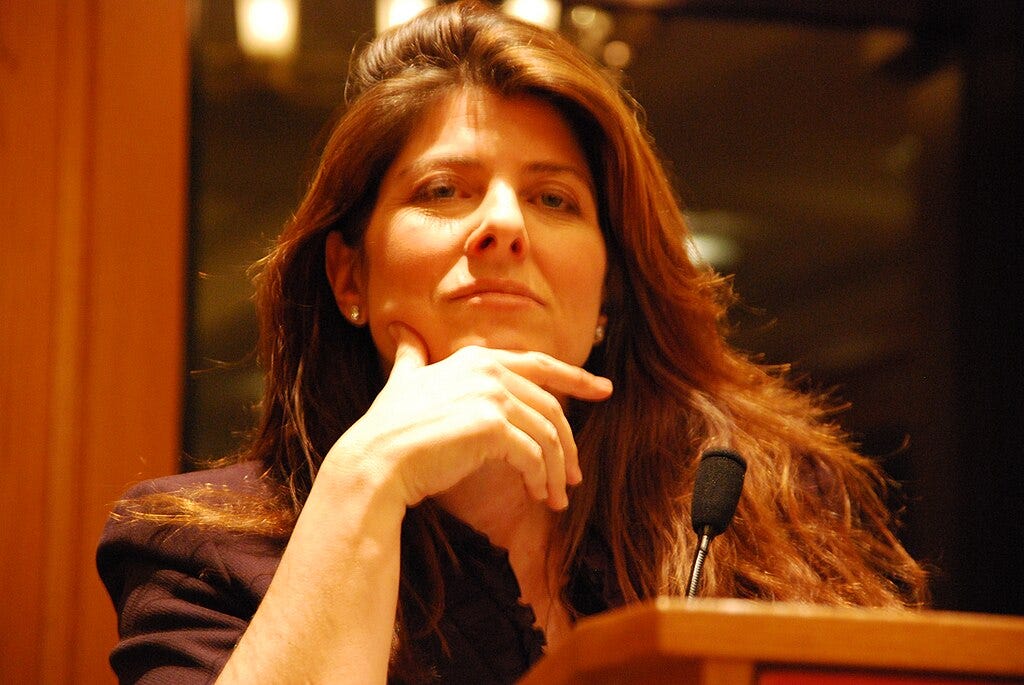The International Syndicate: How the West Manufactures Enemies, Wars, and Control (Part 4/5)
The battlefield isn’t just bombs—it’s beliefs. From Laurel Canyon to influencer psyops, discover how Western intelligence weaponizes culture, controls the narrative, and scripts the enemies.
Previously in Parts 1–3 of The International Syndicate:
We followed the thread from history’s darkest corners into the engine of global control.
Part 1 revealed the origin story: Operation Gladio, a Cold War shadow army built by NATO and the CIA, that mutated into a domestic terror network rigging elections and fabricating enemies across Europe.
Part 2 exposed the hub—a five-pillar alliance: CIA, NATO, MI6, Mossad, and The Vatican. These forces don’t just influence world events—they manufacture them.
Part 3 followed the money. From Afghan heroin to Vatican banks, from orphan trafficking rings to military “aid” packages, we mapped how black-market industries fund black-budget wars—off the books, outside the law, and far from public view.
And now, in Part 4, we ask:
What good is global power… if you can’t control what people think?
Part 4 – The Rim: How the Media, Culture, and Psyops Keep the Wheel Turning
Every machine needs traction.
The hub gives direction.
The spokes generate power.
But the rim? That’s where it meets the world. That’s how it moves the masses.
And in this machine, the rim is made of media, culture, and psychological warfare.
Because bombs may kill bodies, but narratives control minds.
The Real Battlefield is Perception
The International Syndicate doesn’t just wage war—it writes the script.
Colonel Towner-Watkins (
) calls this "narrative engineering”—the manipulation of beliefs, memories, and public consensus. To keep the wheel spinning, people must believe the right things... or fear the right enemies.And since 2012, it’s not just foreign psyops.
Thanks to the Smith-Mundt Modernization Act, it’s now legal for U.S. intelligence agencies to conduct propaganda operations on American citizens—disguised as journalism, education, entertainment, or online discourse.
Everything is the narrative.
Nothing is the whole truth.
If you need an example, just look at the 1960s.
Yes — The Hippies were a psy op.
Laurel Canyon: The Psyop in Bell Bottoms
Let’s rewind the tape to the 1960s.
Everyone knows the story: peace, love, LSD, flower crowns, sit-ins, and the dream of a new world.
But what if the Summer of Love wasn’t organic?
What if the counterculture wasn’t a revolution… but a rerun—produced, directed, and broadcast by the same system it claimed to resist?
Because that’s exactly what the evidence suggests.
Welcome to Laurel Canyon—the strangest little suburb in America.
So, why Laurel Canyon?
Here’s the setup:
Nestled in the Hollywood Hills, minutes from major studios.
No one ever wondered why so many famous musicians lived there... at the exact same time.
Oh, and sitting right in the middle? A top-secret military installation called Lookout Mountain Air Force Station.
Wait—what?
Yes. A full-blown classified film studio operated by the U.S. military.
Sound stages.
Editing bays.
Classified vaults.
They made atomic test footage, psychological warfare reels… and possibly a whole lot more that’s still under wraps.
So why was it built in a quiet canyon crawling with rockstars?
Simple: if you're going to engineer a cultural movement, you do it where the cameras are.
Coincidence? Or Counter-Insurgency?
Let’s talk about the stars of the scene.
These weren’t starving artists or street punks. They were the sons and daughters of generals, admirals, and spooks.

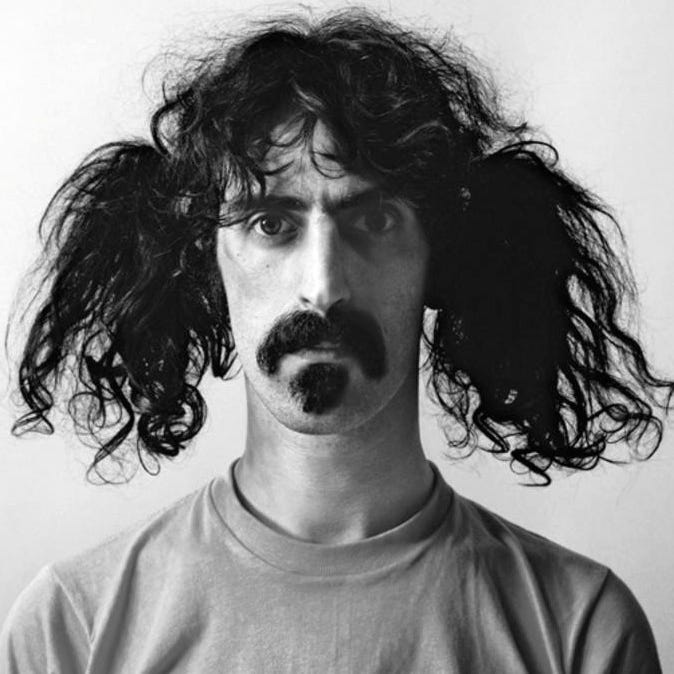
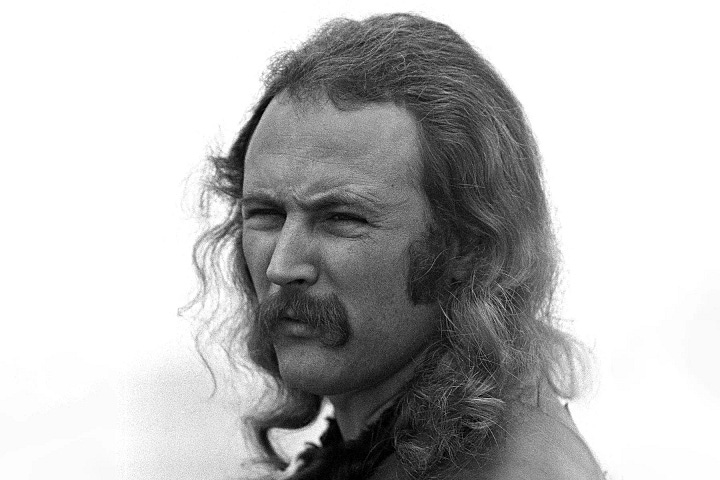

Jim Morrison (The Doors)? His dad was Admiral George Morrison—who commanded the fleet during the Gulf of Tonkin false flag.
Frank Zappa? His father worked on chemical weapons for the Department of Defense. He had a top security clearance at Edgewood Arsenal, which has it’s own history.
David Crosby? From a family dripping in intelligence and elite East Coast bloodlines.
His father, Major Floyd Delafield Crosby, was an Annapolis graduate and WWII military intelligence officer.
His full name is David Van Cortlandt Crosby. He comes from the Van Cortlandt, Van Schuyler, and Van Rensselaer families, who were among the most powerful and influential dynasties in early American history.
The Van Cortlandts were major landowners in colonial New York, holding vast tracts of what is now the Bronx and Westchester, with ties to banking and early American governance.
The Van Schuylers were politically dominant, producing figures like Philip Schuyler, a Revolutionary War general and U.S. senator whose daughter married Alexander Hamilton, linking them directly to the nation's founding elite.
The Van Rensselaers controlled Rensselaerswyck, one of the largest private landholdings in U.S. history—essentially feudal lords of upstate New York. They held hereditary seats in politics and were early power players in railroads and banking.
He is also a direct descendant of Founding Fathers and Federalist Papers authors Alexander Hamilton (as stated) and John Jay.
Stephen Stills? Raised near the U.S. Canal Zone (El Salvador, Costa Rica, and Panama) —another CIA playground.
That’s not a band lineup. That’s a CIA alumni newsletter.
And guess what? They all “just happened” to congregate in Laurel Canyon.
At the exact same time.
While a covert military studio churned out psychological operations a block away.
You buying that?
The CIA Didn’t Fight the Counterculture. They Built It.
Let’s break it down:
The Vietnam War was exploding.
Students were waking up.
Resistance was building.
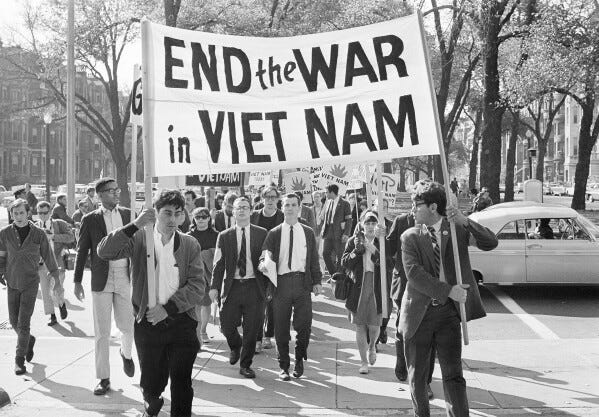
And then… the “movement” shows up. But it’s not a focused revolt. It’s a distraction.
Instead of disciplined opposition? We got:
Psychedelics pushed hard by CIA fronts like MK-Ultra and Project Chaos
Mass gatherings that felt more like controlled experiments than grassroots activism
An entire generation tripping instead of organizing
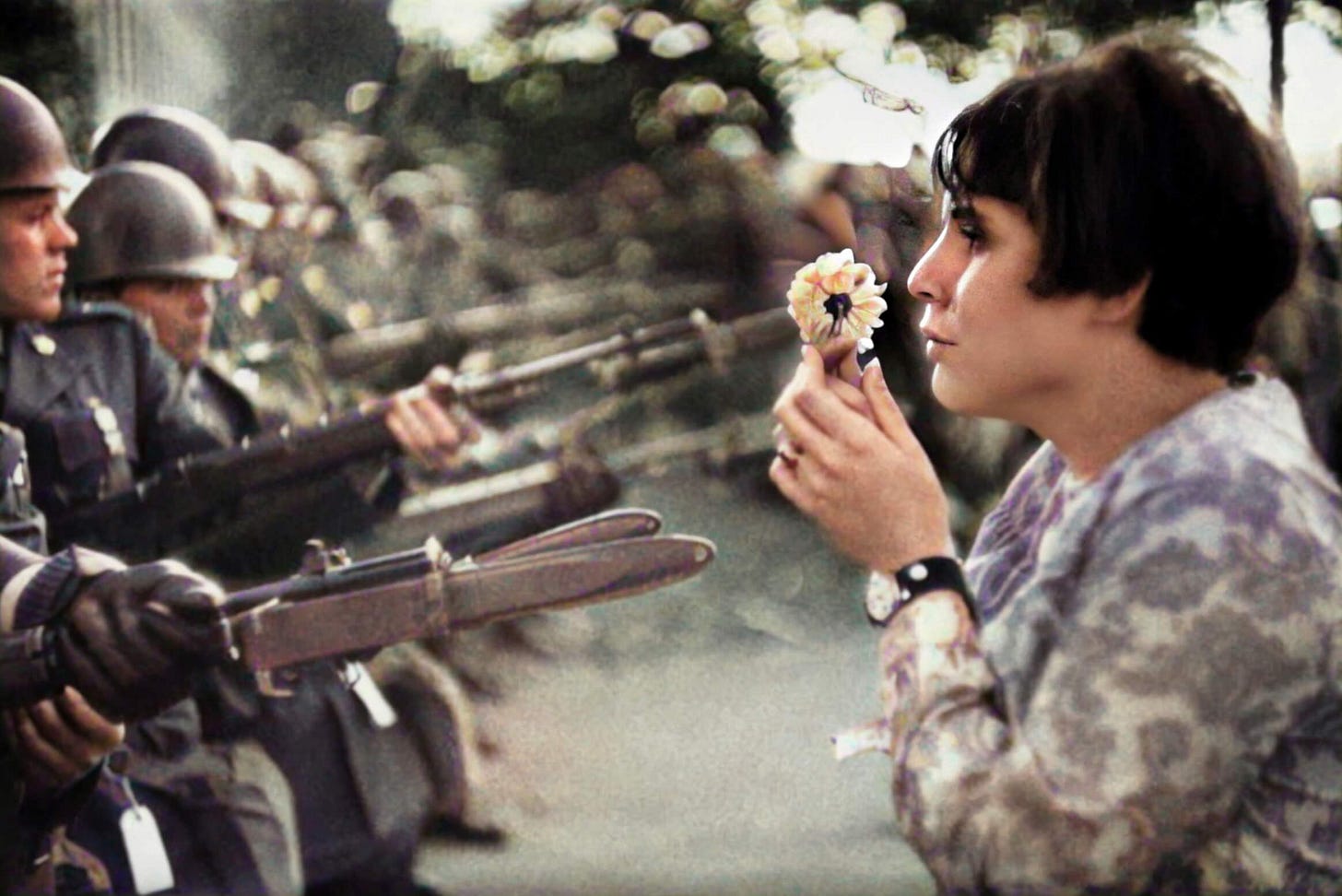
And why change the movement? Why switch the optics from professionals and college students to “flower children?”
Precisely that - the optics.
Because if the anti-war voice was connected to “hippy-dippy”, promiscuous drug users, then that voice would be weak.
“There were all these activists, you know, Berkeley radicals, White Panthers... all trying to stop the war and change things for the better. Then we got flooded with all these 'flower children' who were into drugs and sex. Where the hell did the hippies come from?!”
— Abbie Hoffman, American political and social activist who co-founded the Youth International Party and was a member of the Chicago Seven
Drugs, Disinformation, and the Death of Dissent
Let’s not forget who was passing out the acid either.
The CIA had agents embedded in music venues, communes, therapy clinics, and college campuses.
They weaponized psychedelics not to liberate minds—but to fragment movements.
The hippie image became a tool: easy to mock, easy to isolate, easy to surveil.
“I couldn’t figure out why they [the CIA] were paying me good money to take these psychedelics…at first, they gave me LSD, then the next week, I think it was mescaline, the next week it was psilocybin, and the fourth week it was all three at once.”
— Robert Hunter, chief lyricist of The Grateful Dead
Meanwhile, real activists—civil rights leaders, whistleblowers, anti-war organizers—were being silenced through COINTELPRO and worse.
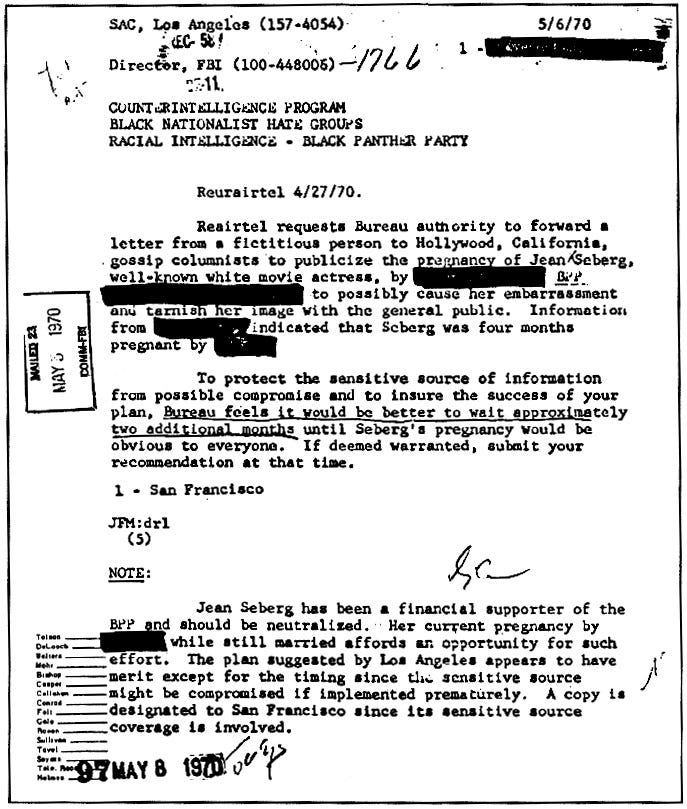
Honestly, you could write A LOT about the CIA’s involvement in the hippy movement. There was a whole book written, after all:
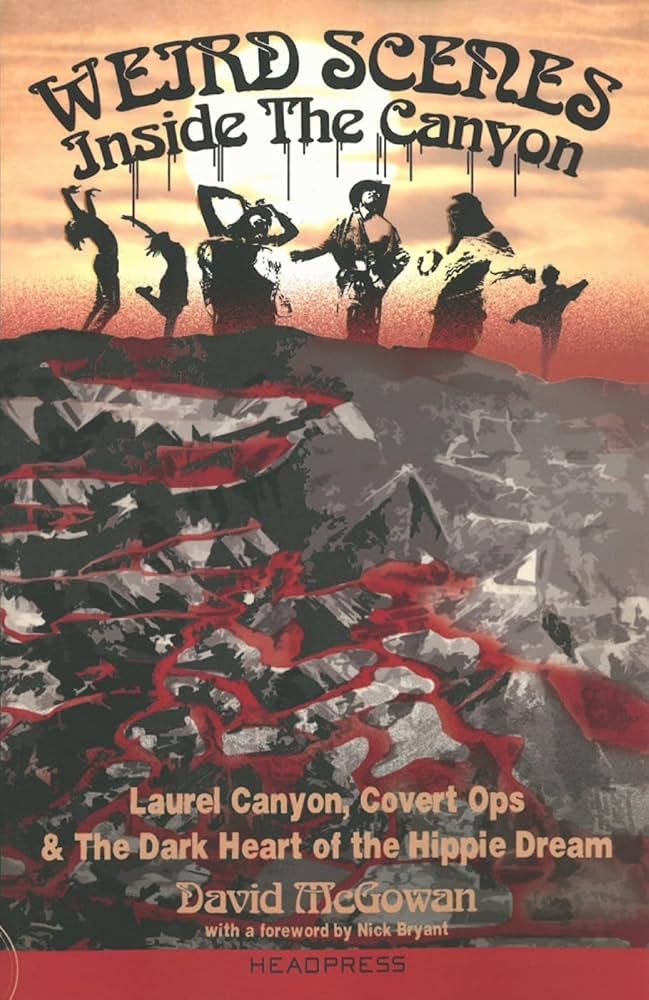
Perhaps we’ll write a whole article or series about that later.
For now though, the truth is clear.
Narratives were controlled.
Desenters were silenced.
And history was orchestrated behind the scenes.
And this happened in America.
The Jazz Cover for a Coup
The hippie revolution had a blueprint—and it wasn’t invented in Laurel Canyon. It was crowd-tested and fine-tuned years earlier, halfway around the world.
Jazz Ambassadors on Diplomatic Tour
In the 1950s and '60s, the U.S. State Department sent its top jazz stars overseas—Louis Armstrong, Dizzy Gillespie, Quincy Jones, Nina Simone.
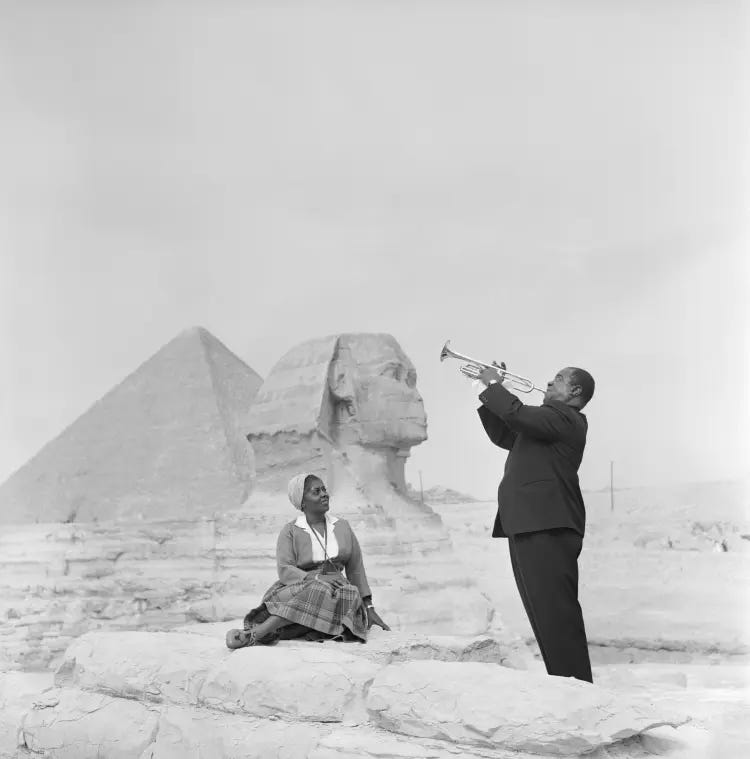
They were billed as "Cultural Ambassadors," promoting freedom and racial harmony… while American cities were burning over civil rights.
The official mission though?
To combat Soviet influence in newly independent nations. In Congolese cities, Armstrong was literally a walking billboard for American exceptionalism.
But the truth is something else.
The truth is that it was never entirely about combating soviet influence.
It was about a coup and keeping Africa under the thumb of the west.
Jazz and the Congo Coup: A Deadly Distraction
“Louis Armstrong, Dizzy Gillespie and Nina Simone are jazz legends, but in the 1960s, they were unwittingly used as decoys by the United States to deflect attention from its role in its meddling in African countries like Congo.”
— How jazz played out over Congo’s chaotic coup, The Brussels Times, Jan 2025
When Patrice Lumumba became Congo’s first democratically elected prime minister in 1960, he refused to align with the U.S. or Belgium. Fearing his pro-Soviet leanings—and eyeing Congo’s mineral wealth—the CIA backed a coup.
You can read more about CIA backed coups (including the Congo) here:
The Blueprint Pt 1/3: The CIA’s Global Coup Machine (1950s–70s)
From the 1950s through the 1970s, the CIA orchestrated a series of covert operations that toppled democratically elected leaders and installed authoritarian regimes across Latin America, Africa, and Southeast Asia.
Patrice Lumumba was captured, tortured, and killed in January 1961. This was the moment when jazz stopped being music and became cover.
Armstrong and Dizzy Gillespie were in town. Their concerts drew attention away from the violence. Their popularity distracted congolese audiences—and global media—from the clandestine elimination of a leader.
Filmmaker Johan Grimonprez created a whole award-winning documentary about it that was nominated for the Academy Award of Best Documentary Feature Film.
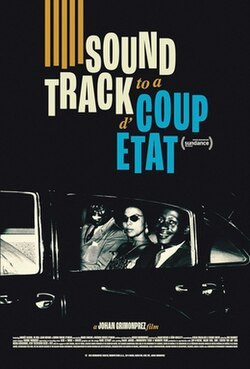
The assassination of Lumumba was “ground zero” for how the West was about to handle African independence—mineral plunder, anti-colonial leaders, jazz diplomacy, and CIA plots in one package.
“Much of what Chris Hedges [Pulitzer Prize winning journalist] would call corporatocracy or corporate coup d’état is reflected in how those lobbyists who worked in the war industry are later paid by the very same system.
Take for example, Dick Cheney, who got into politics, then went back to being Halliburton’s CEO, and vice versa. That revolving door metaphor very much defines what happens with foreign policy.”
What This Reveals
Art as a distraction engine
Jazz was widely loved—and that made it perfect to deflect attention.Cultural influence backed by covert ops
These tours were run alongside CIA-backed coups—not accidents.Racial messaging as propaganda
They broadcasted racial unity abroad even as the same unity was violently suppressed at home.
So next time you hear phrases like “diplomatic mission” or “spreading democracy” or “global outreach through arts”, remember Laurel Canyon and the Jazz Ambassadors.
Who’s funding it?
Who’s observing?
What crisis is it distracting from?
That’s how you spot the soft-power hand hiding the gun.
Hollywood: The Pentagon’s Script Doctor
You ever wonder why Hollywood movies—even “anti-war” ones—never seem to touch the real nerve?
Because the U.S. military has an office in Hollywood.
Literally.
It’s called the DOD’s Entertainment Media Office. And if a film wants access to military equipment or locations, they hand over the script first.
Same goes for the CIA.
Thousands of movies and shows—everything from Top Gun to Iron Man to Transformers—were shaped by these “collaborations.”
What gets cut?
Rogue CIA agents that question orders
Military failures
Anti-imperialist politics
Anything that might, you know, wake you up
This isn’t entertainment.
It’s narrative laundering.
Just a few examples:
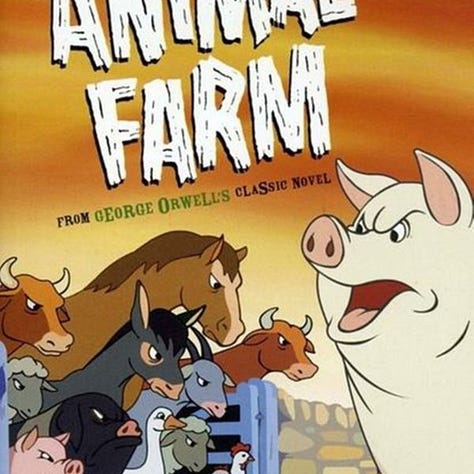
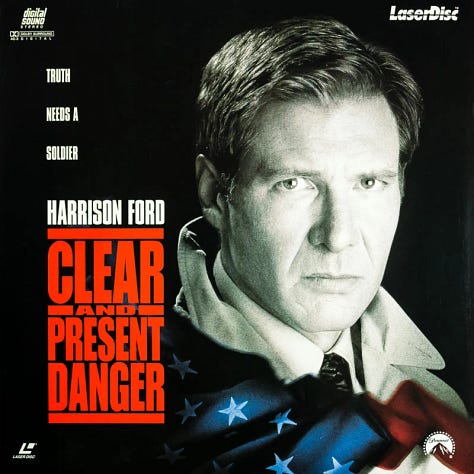

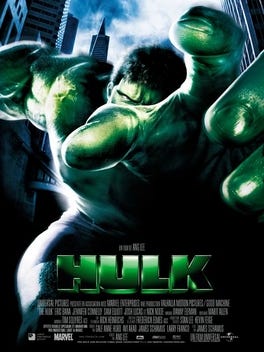
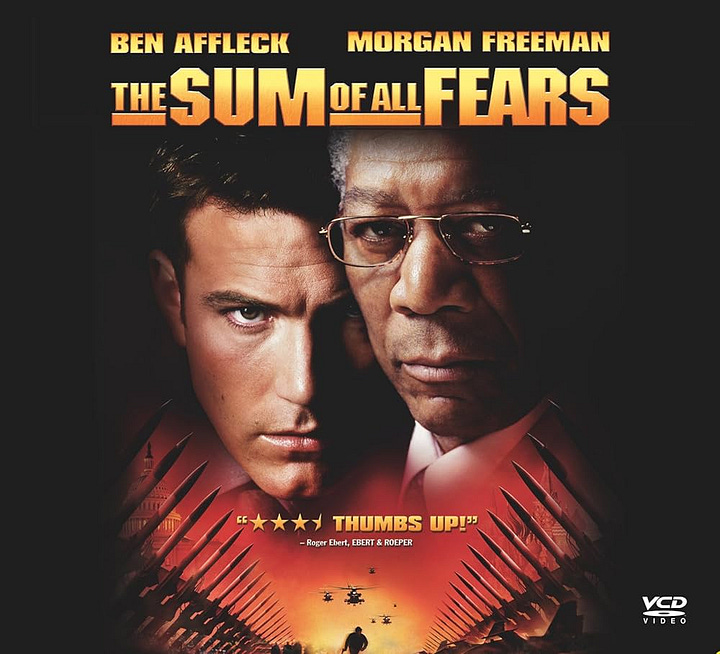

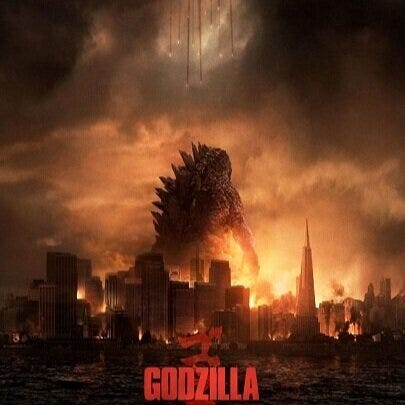
Animal Farm (1954):
The CIA secretly funded the animated adaptation of George Orwell’s novel and altered its ending. In the original book, the pigs (representing communists) and humans (capitalists) become indistinguishable, critiquing both systems. The CIA changed the film’s conclusion so the other animals overthrow the pigs, creating a clear anti-communist message. This was part of a broader Cold War propaganda effort. And the cost? Sonia Orwell granted the rights to her late husband’s work with one condition - she wanted to meet Clark Gable.
Clear and Present Danger (1994):
The DoD requested multiple script changes to Tom Clancy’s adaptation. A scene where Jack Ryan convinces an Air Force helicopter crew to undertake a rescue mission without orders was altered to him purchasing a civilian helicopter with CIA funds. Additionally, a plot involving an F-15 shooting down unarmed drug-smuggling planes was changed to a ground-based commando operation, and a subplot about a Coast Guard crew conducting a mock execution was largely omitted.
Black Hawk Down (2001):
The DoD insisted on substantial script revisions to transform the narrative of the 1993 Mogadishu incident, which highlighted military shortcomings, into a story of American valor against a faceless enemy. The changes downplayed real-life operational failures and reframed the event to boost military prestige, aligning with recruitment and public relations goals.
The Sum of All Fears (2002):
The CIA worked closely with the filmmakers to again change another Tom Clancy adaptation. The original script included a subplot where CIA operatives were involved in a rogue operation, suggesting internal corruption. This was removed at the CIA’s request to maintain an image of competence and integrity. Additionally, scenes depicting aggressive CIA interrogation methods were softened to avoid parallels with post-9/11 controversies.
Hulk (2003):
The DoD provided access to military bases and vehicles for the film but demanded significant script changes in exchange. References to the military conducting human experiments and dialogue about Operation Ranch Hand (a Vietnam War-era chemical defoliation program) were removed.
The Recruit (2003):
The CIA provided script feedback and allowed filming at its Langley headquarters to ensure a favorable portrayal in this thriller about a CIA trainee. However, the initial script included a plotline where senior CIA officers were involved in a mole operation that endangered national security, implying systemic corruption. The CIA requested this be changed to focus on a single rogue agent, avoiding suggestions of an institutional problem. Scenes depicting harsh training methods or psychological manipulation were also softened to present CIA recruitment as rigorous but fair.
Iron Man (2008):
The DoD provided military equipment, including Humvees and Air Force personnel, and allowed filming at Edwards Air Force Base. In exchange, the Pentagon’s Hollywood liaison, Phil Strub, required script revisions. Early drafts included scenes questioning the ethics of Tony Stark’s weapons manufacturing and U.S. military involvement in the Middle East, with references to real-world arms controversies. These were toned down or removed to avoid critiquing the military-industrial complex. A scene depicting a military officer as complicit in illegal arms deals was also cut, replaced with a more neutral antagonist.
Zero Dark Thirty (2012):
The CIA heavily influenced the script during pre-production, particularly regarding the depiction of torture. The agency revised Mark Boal’s screenplay to emphasize torture as a critical tool in locating Osama bin Laden, despite historical evidence suggesting otherwise (his location was primarily identified through existing files).
Godzilla (2014):
The DoD influenced the script to remove a reference to the Hiroshima bombing, which in the 1954 original served as an allegory for nuclear devastation caused by the U.S. The Pentagon also introduced Cold War dynamics, such as a lost Russian nuclear submarine, to shift the narrative away from critiquing U.S. actions.
Social Media: The New Psyop Playground
Now jump to today.
The internet was supposed to be the great equalizer. A way for the people to talk back. But once again, the Syndicate adapted.
How?
Algorithmic curation: Your feed isn’t organic—it’s engineered.
Shadowbanning: Dissenting views get buried, not banned. You just disappear.
Influencer psyops: Creators are trained, funded, and guided to shape public opinion—especially on political and social issues.
If you want to learn more about this, check out these articles:
Operation Earnest Voice: The Future of Propaganda (Mockingbird 2.0)
What if the battlefield wasn’t on the ground, but in your mind? That’s the world we live in today, where wars are fought with words, not just weapons. Enter Operation Earnest Voice (OEV). To shape narratives, combat extremist propaganda, and sway public opinion across the globe.
Your Digital Twin is Here
Have you ever wondered if there’s a digital version of yourself existing somewhere in the virtual world?
Remember that time every influencer had the same talking points on Ukraine, Covid, or Palestine—within 24 hours?
Yeah, that wasn’t spontaneous.
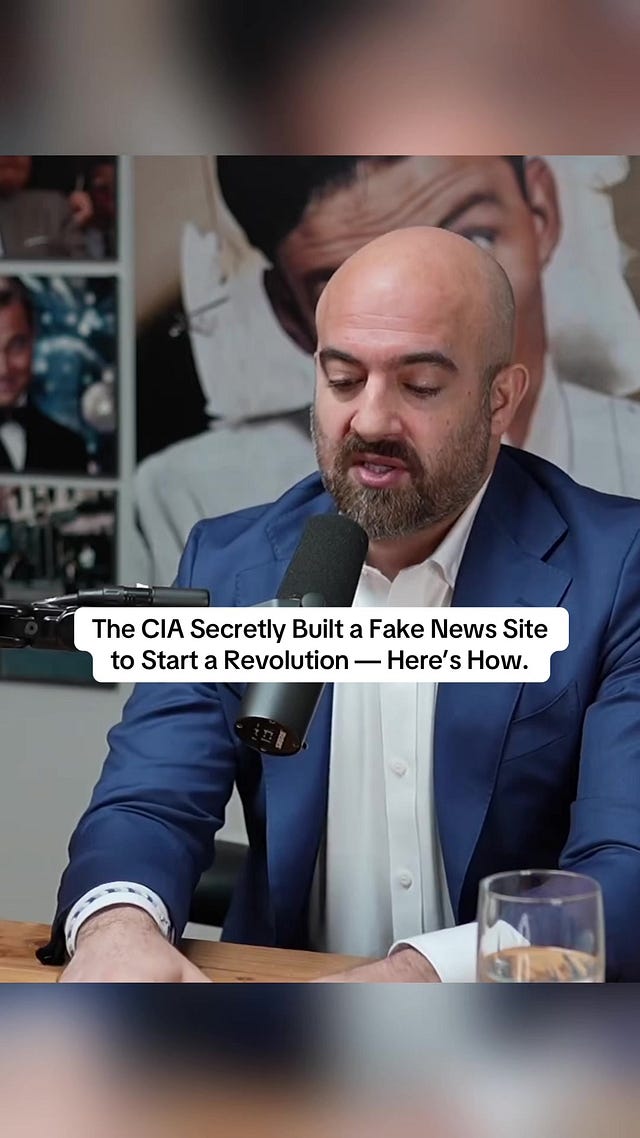
 Tiktok failed to load.
Tiktok failed to load.Enable 3rd party cookies or use another browser
Activism as Aesthetic
And when actual resistance does rise? They brand it.
They take your rage, wrap it in slogans, hashtags, merch, and turn it into lifestyle content.
What was once a movement becomes a moment.
A vibe.
A t-shirt.
"We were told we couldn't even be told in broad terms what was happening [with USAid's Office of Transition Initiatives] because 'people will die.’”
— Fulton Armstrong, Senate Foreign Relations committee and senior analyst on Latin America for the US Intel community
Laurel Canyon all over again. They do it every time:
Black Lives Matter? Real roots. Real fury.
Then came the NGOs, the grants, the rainbow capitalism, the tax-sheltered laundering.

#MeToo? Critical spotlight on abuse and corruption.
Suddenly, it’s a PR campaign, with selective outrage and a media-protected caste system.

It’s not that these movements weren’t necessary.
They were.
That’s why they had to be co-opted.
Fragment. Commodify. Nullify.
So what happens next? Why do they do it?
You get identity politics as the main course.
No more class-based rebellion.
No more global anti-imperialism.
Just endless micro-categories and purity tests.
Divide the working class. Turn solidarity into snark.
Now everyone's fighting, but no one's aiming at the real enemy.
And if someone starts to?
They get branded a conspiracy theorist.
Or worse, an extremist.
Naomi Wolf: From Feminist Icon to “Extremist” — or So They Say
Naomi Rebekah Wolf wasn’t always controversial.
In the 1990s, she was one of the most influential feminist thinkers in the West. The Beauty Myth made her a household name—a searing critique of how modern media and marketing weaponize women’s insecurities. She advised Al Gore. She wrote for The Guardian, The New York Times, and The Atlantic. She was liberal America’s intellectual sweetheart.
Then she started asking the wrong questions.
Wolf became increasingly vocal against surveillance, censorship, and state overreach—especially in the post-9/11 era.
When she published The End of America in 2007, arguing that the U.S. was sliding into fascism by following a recognizable historical blueprint, she was smeared as alarmist. Not wrong—just too much.
Then came COVID.

Wolf criticized vaccine mandates and digital tracking infrastructure. She raised concerns about biometric passports, centralized health surveillance, and the erosion of bodily autonomy—positions that, ten years earlier, would’ve aligned with ACLU talking points.
But by 2020?
She was branded “anti-vax.”
Then a “conspiracy theorist.”
Then “dangerous.”
Her Twitter account was suspended. Her interviews were pulled. Her name became a punchline for late-night hosts who’d once championed her.
Why the shift?
Because Naomi Wolf broke the spell.
She stepped outside the bounds of acceptable dissent—that narrow corridor where the establishment tolerates critique as long as it doesn’t question the system itself. The moment she challenged pharmaceutical giants, digital censorship, and collusion between state and corporate power—she wasn’t a thinker anymore.
She was an extremist.
Not because her ideas changed. But because the Overton window slammed shut.
And that’s how the machine works.
It praises you for asking bold questions—until your questions get too close to the truth.
Truth becomes opinion.
Dissent becomes deviance.
And while the left and right punch sideways, the machine spins forward—untouched.
Control through Fear: The Propaganda Playbook
So we’re talking about how The Syndicate controls our perceptions and our narratives.
Creating movements.
Reframing them.
Destroying the reputation of anyone who disagrees too much.
And now, finally, fear.
From the Red Scare to Russiagate, the Syndicate recycles narratives to justify control and neutralize dissent.
Standard Tactics:
False Flags: Attack blamed on an approved scapegoat (leftists, Muslims, Russians)
Crisis Response: Amplify fear, call for emergency powers
Media Sync: Every outlet echoes the same talking points
Legislation: Surveillance expands, dissent criminalized
If the people ever ask the wrong questions, release a new distraction.
The truth isn’t hidden.
It’s buried under ten layers of approved lies.
If you want to know more about that, check out this article:
THE PLAYBOOK: 8 Red Flags of a CIA-Backed Regime Change
In the theater of global politics, not every revolution is what it seems. One month a nation is stable—quiet, maybe even thriving.
Mind Control is Real—Just Not How You Think
Forget brain chips. Focus on belief chips.
Through repetition, trauma, and media saturation, the Syndicate uses behavioral conditioning and social scripting to keep the population docile.
If you need proof of this, watch the video below:
This is not fiction.
From MK-Ultra’s real mind control experiments to modern algorithmic addiction, it’s all part of the same project:
Control not what people do—but how they think about what they’re doing.
 Tiktok failed to load.
Tiktok failed to load.Enable 3rd party cookies or use another browser
WHAT’S NEXT
If Part 4 showed us how the Syndicate controls the story, Part 5 asks: What’s the endgame?
Why do they need endless war, perpetual fear, and total perception management?
From stay-behind armies and COINTELPRO to MK-Ultra, COINTELPRO, and regime-change wars—from false flags to domestic psyops—the goal isn’t protection.
It’s obedience.
In Part 5: What They Do—and Why, we break the spell completely. You'll see how every operation, every war, every media wave has pointed toward one goal:
The creation of a global control system—a New World Order.
FAQ
1. Is the U.S. government allowed to use propaganda on its own citizens?
Yes. Since the Smith-Mundt Modernization Act of 2012, it’s legal for U.S. intelligence and the State Department to conduct information operations—including psychological influence campaigns—on domestic audiences. That includes media, social platforms, and even entertainment content.
🧾 Source: Public Law 112-239, Section 1078
2. What was Laurel Canyon and why does it matter?
Laurel Canyon was a strange convergence of 1960s rock stars—all with ties to military or intelligence families—living near Lookout Mountain Air Force Station, a classified film and psyop facility. Researchers like David McGowan argue it was a cultural counter-insurgency to disarm real anti-war sentiment by replacing it with a state-managed “counterculture.”
📘 Book: Weird Scenes Inside the Canyon by David McGowan
3. What is “narrative engineering”?
Narrative engineering is the manipulation of public perception through strategic storytelling—across media, film, journalism, social media, and academia. It’s how the Syndicate sells wars, silences dissent, and reprograms memory itself.
4. Was MK-Ultra real? What did it do?
Yes. MK-Ultra was a CIA mind control program that experimented with LSD, hypnosis, electroshock, and trauma-based conditioning. Victims included prisoners, hospital patients, and even children. Its goal? Control thought and behavior through trauma.
📂 Declassified CIA MK-Ultra documents
5. What’s the point of all this propaganda?
Power. If you control the story, you control the response.
You can justify war.
You can delegitimize dissent.
You can normalize surveillance.
And you can hide the machine doing it all.
The Syndicate doesn’t need truth—it needs consent through confusion.






